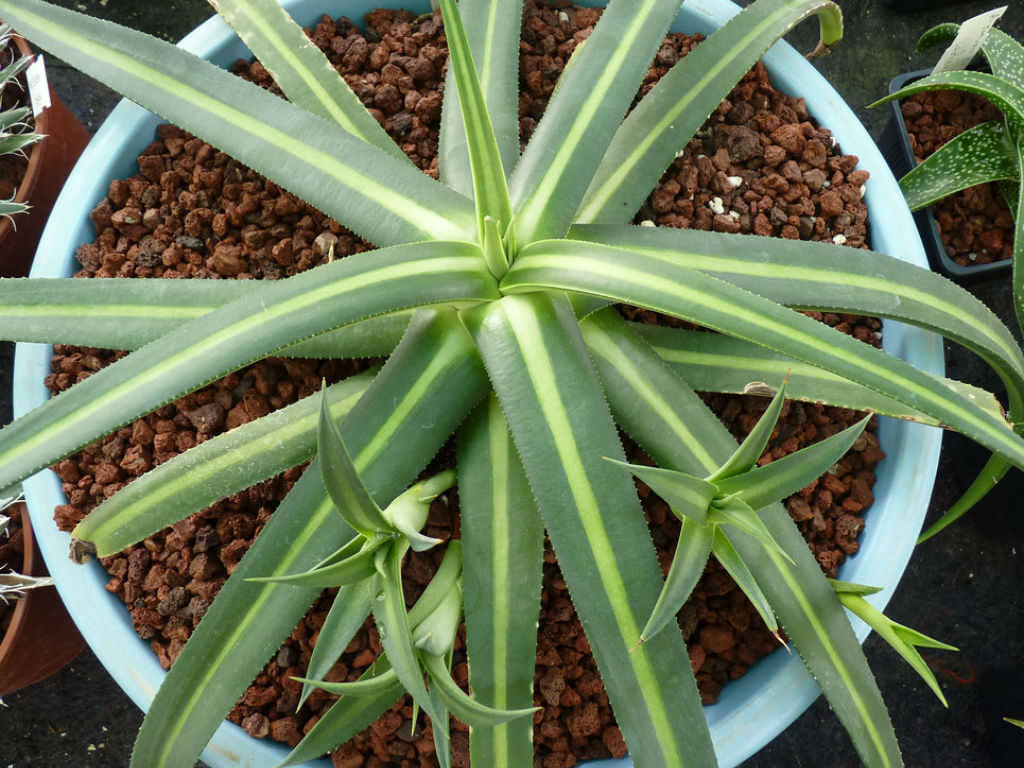Scientific Name
Agave nizandensis Cutak
Common Name(s)
Nizanda Agave
Scientific Classification
Family: Asparagaceae
Subfamily: Agavoideae
Genus: Agave
Origin
This species is native to southern Mexico. It occurs in a small area near the town of Nizanda in the State of Oaxaca.
Description
Agave nizandensis is a low-growing succulent that forms stemless rosettes of green leaves with a pale mid-stripe. The rosettes grow up to 2 feet (60 cm) in diameter, slowly spreading by stolons. Leaves are narrow with small marginal teeth and a blunt red terminal spine, up to 1 foot (30 cm) long and up to 1 inch (2.5 cm) wide. They are recurved downwards, with a flat to slightly concave upper surface and convex below. In winter or with some water stress, leaves are flushed with red or purple. Flowers are yellowish-green and appear in clusters on an up to 3 feet (90 cm) tall spike, usually in summer.
Etymology
The specific epithet "nizandensis" refers to Nizanda, the town where the species is found.

How to Grow and Care for Agave nizandensis
Light: These plants require full sun to part shade. If you are growing Agaves indoors, choose a bright, sunny window with as much sun as possible. Agave plants love going outside from spring to fall.
Soil: Agaves will tolerate most soils as long as they have good drainage, but their preference is sandy or rocky soil.
Hardiness: Agave nizandensis can withstand temperatures as low as 30 to 40 °F (-1.1 to 4.4 °C), USDA hardiness zones 10a to 10b.
Watering: Mature plants are very drought tolerant. From spring to fall, water thoroughly your Agave when the soil mix becomes dry. In winter, water sparingly about once a month. Plants in containers require more frequent watering than those in the ground.
Fertilizing: Give your Agaves a small amount of fertilizer in the spring during the first two years.
Repotting: When the pot becomes full of roots, it has become pot-bound. If you notice your Agave becoming pot-bound, repot it with new soil in a new pot that is just slightly larger than the old one.
Propagation: Since it can take years to produce seeds, Agaves are usually propagated by offsets.
Learn more at How to Grow and Care for Agave.
Toxicity of Agave nizandensis
Agave nizandensis is not toxic to humans but may be mildly poisonous to children and pets.
Links
- Back to genus Agave
- Succupedia: Browse succulents by Scientific Name, Common Name, Genus, Family, USDA Hardiness Zone, Origin, or cacti by Genus
Photo Gallery
Click on a photo to see a larger version.



